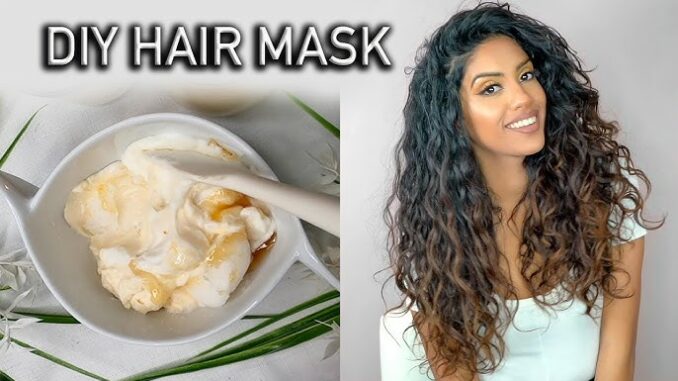
Introduction:
In the quest for healthy, luscious locks, many of us turn to commercial hair products that promise miraculous results. However, hidden behind enticing packaging and lofty claims are often chemicals and additives that may do more harm than good in the long run. Fortunately, there’s a natural and cost-effective alternative: DIY hair masks. By harnessing the power of simple, nourishing ingredients found in your kitchen, you can create customized treatments tailored to your hair’s specific needs. In this comprehensive guide, we will explore the benefits of DIY hair masks, discuss key ingredients for healthy hair, and provide step-by-step instructions for creating your own homemade hair masks.
Section 1: Understanding the Benefits of DIY Hair Masks
1.1 Natural Ingredients: DIY hair masks allow you to avoid the potentially harmful chemicals found in many commercial hair products. By using natural ingredients, you can nourish your hair without exposing it to harsh additives or synthetic fragrances.
1.2 Customization: One of the greatest benefits of DIY hair masks is the ability to tailor the ingredients to suit your hair type and specific concerns. Whether you have dry, damaged hair or struggle with excess oiliness, you can create a customized treatment that addresses your unique needs.
1.3 Cost-Effectiveness: Making your own hair masks at home is often much more affordable than purchasing commercial products. With just a few simple ingredients, you can create potent treatments that rival the effectiveness of expensive salon treatments.
Section 2: Key Ingredients for Healthy Hair
2.1 Coconut Oil: Coconut oil is a versatile ingredient that can help moisturize dry, damaged hair. Its unique composition allows it to penetrate the hair shaft, leaving hair soft, shiny, and more manageable.
2.2 Avocado: Rich in vitamins and essential fatty acids, avocado is a powerhouse ingredient for nourishing and strengthening hair. It helps hydrate the scalp, reduce frizz, and promote healthy hair growth.
2.3 Honey: Honey is a natural humectant, meaning it helps attract and retain moisture in the hair. It also contains antioxidants and antimicrobial properties that can benefit the scalp and hair follicles.
2.4 Yogurt: Yogurt is packed with protein, which is essential for repairing and strengthening damaged hair. It also contains lactic acid, which helps exfoliate the scalp and promote healthy hair growth.
Section 3: DIY Hair Mask Recipes
3.1 Moisturizing Coconut Oil Mask: Ingredients:
- 2 tablespoons coconut oil
- 1 tablespoon honey Instructions:
- In a small bowl, mix together the coconut oil and honey until well combined.
- Apply the mixture to damp hair, focusing on the ends.
- Leave the mask on for 30 minutes to an hour, then rinse thoroughly with warm water.
3.2 Nourishing Avocado Mask: Ingredients:
- 1 ripe avocado
- 2 tablespoons yogurt Instructions:
- Mash the avocado in a bowl until smooth.
- Stir in the yogurt until well blended.
- Apply the mixture to clean, damp hair, focusing on the roots and ends.
- Leave the mask on for 20-30 minutes, then rinse thoroughly with warm water.
3.3 Strengthening Egg Mask: Ingredients:
- 1 egg
- 1 tablespoon olive oil Instructions:
- In a small bowl, whisk together the egg and olive oil until well combined.
- Apply the mixture to damp hair, massaging it into the scalp and through the lengths of the hair.
- Cover your hair with a shower cap and leave the mask on for 30 minutes.
- Rinse the mask out with cool water and shampoo as usual.
Section 4: Tips for Application and Usage
4.1 Start with Clean Hair: Before applying a DIY hair mask, it’s important to start with clean, damp hair. This will allow the ingredients to penetrate more effectively and deliver maximum benefits.
4.2 Use a Shower Cap or Towel: To prevent the mask from dripping and to help lock in moisture, consider covering your hair with a shower cap or wrapping it in a warm towel while the mask is on.
4.3 Rinse Thoroughly: After allowing the mask to sit for the recommended time, be sure to rinse it out thoroughly with warm water. Residue left behind can weigh down the hair and leave it feeling greasy.
Conclusion:
Creating your own DIY hair masks at home is a simple and effective way to promote healthy, beautiful hair without exposing it to harsh chemicals or breaking the bank. By harnessing the power of natural ingredients, you can nourish, strengthen, and revitalize your hair from root to tip. Whether you’re dealing with dryness, damage, or just want to maintain your hair’s health and vitality, DIY hair masks offer a customizable solution that’s as enjoyable to make as it is beneficial to use. So why not treat yourself—and your hair—to a little TLC with a homemade hair mask today? Your locks will thank you for it!